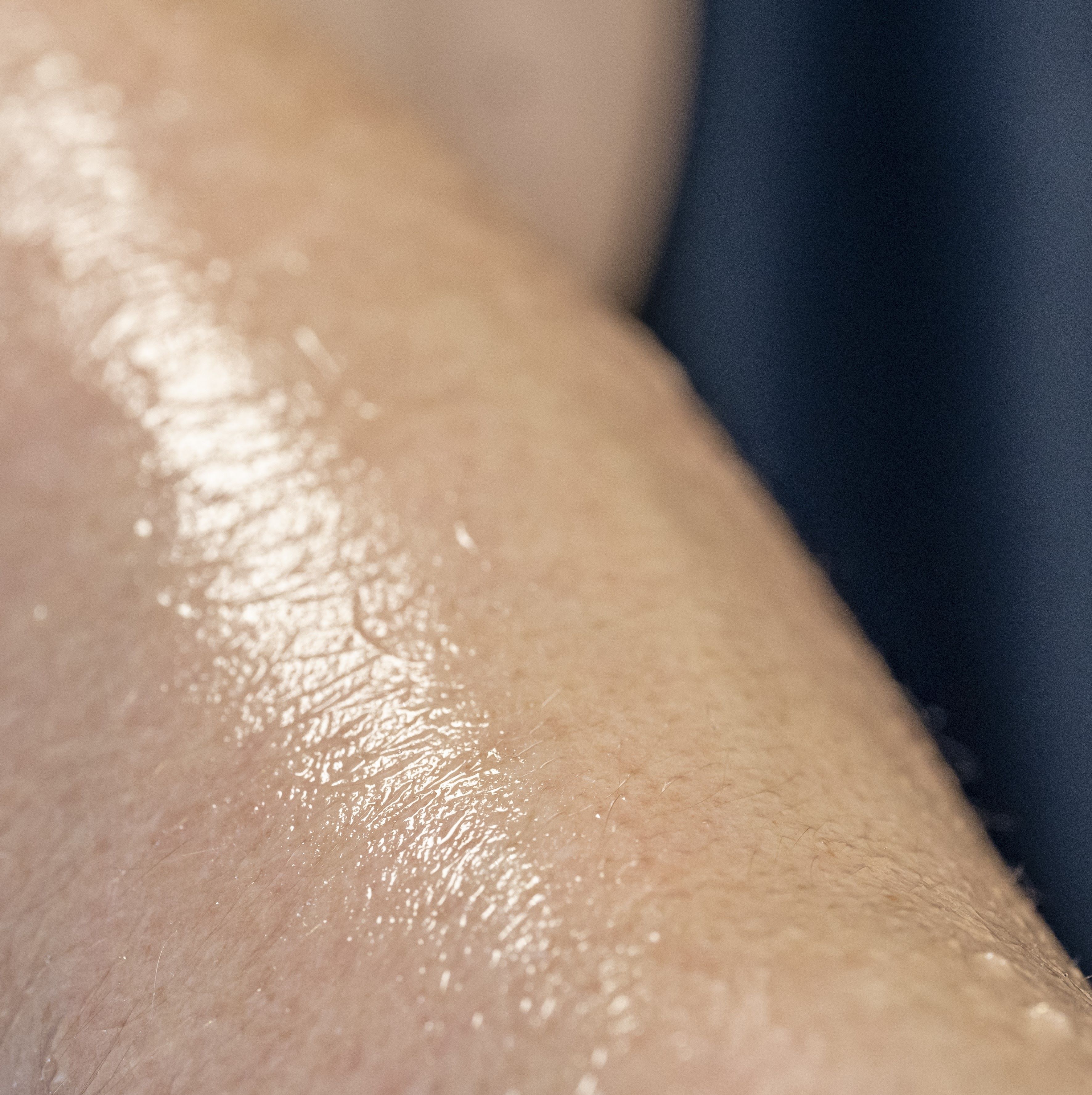No sweat - did you know we don’t have a receptor in our skin for wetness?

Wetness is a sensation we take for granted. Our brain picks uses cues, such as temperature and touch. Pioneering research is exploiting these facts to influence everyday product design, from nappies to deodorants.
We all know what it feels like to be wet. It’s often closely associated with a feeling of cold. But what is the science behind that feeling?
It’s not as simple as you might think.
Dr Davide Filingeri
, Associate Professor in Skin Health within the School of Health Sciences, is dedicating his career to understanding how our brain tells us something is wet, considering we don’t have a receptor for wetness in our skin as we do, for example, for temperature and pain.
“You can play with the brain,” said Davide. “Wetness is one of the most common sensations we experience, so people don’t question it. You can trick your brain to feel wet when something is not wet, or trick it to feel dry when in fact something is wet.
“If you are sitting on a metal chair with bare skin, you might jump up feeling wet when really it’s just the cold of the metal that cools the skin very quickly. Or, if you wear a latex glove and put your hand into water and take it out again, you will probably feel wet on your hand even though there is no moisture in contact with your skin.”
Davide’s background is in thermal physiology and temperature regulation, and understanding some of the basic mechanisms that allow us to regulate body temperature but also sense the external environment. This has led to ongoing research, which started about a decade ago, into how we detect changes in temperature and wetness.
In 2017, Davide founded Thermosenselab, based within the Skin Sensing Research Group , which specialises in research into skin sensing.
“We have discovered that the body uses temperature and touch cues to make sense of wetness on the skin,” explained Davide. “We have developed a physiological model that predicts what physical cues induce a sensation of wetness, which manufacturers of products that deal with wetness are interested in applying to improve the design and comfort of their products.”
Enterprise collaborations Davide’s research has sparked a series of enterprise collaborations with consumer goods manufacturer Procter & Gamble (P&G), as well as with major sports clothes manufacturers.
An initial project with P&G developed new knowledge on the thermal, mechanical and visual inputs that drive skin wetness sensing. P&G used the results of this to inform the design of more comfortable nappies.
“The aim of the project was to model the interaction of a finger as it slides along a wet nappy and understand what sensing cues people use to sense wetness,” said Davide. “Temperature or friction could change the sense of wetness, regardless of the amount of wetness in the nappy. You can trick the brain to feel wetness when there is no wetness, and vice versa.”